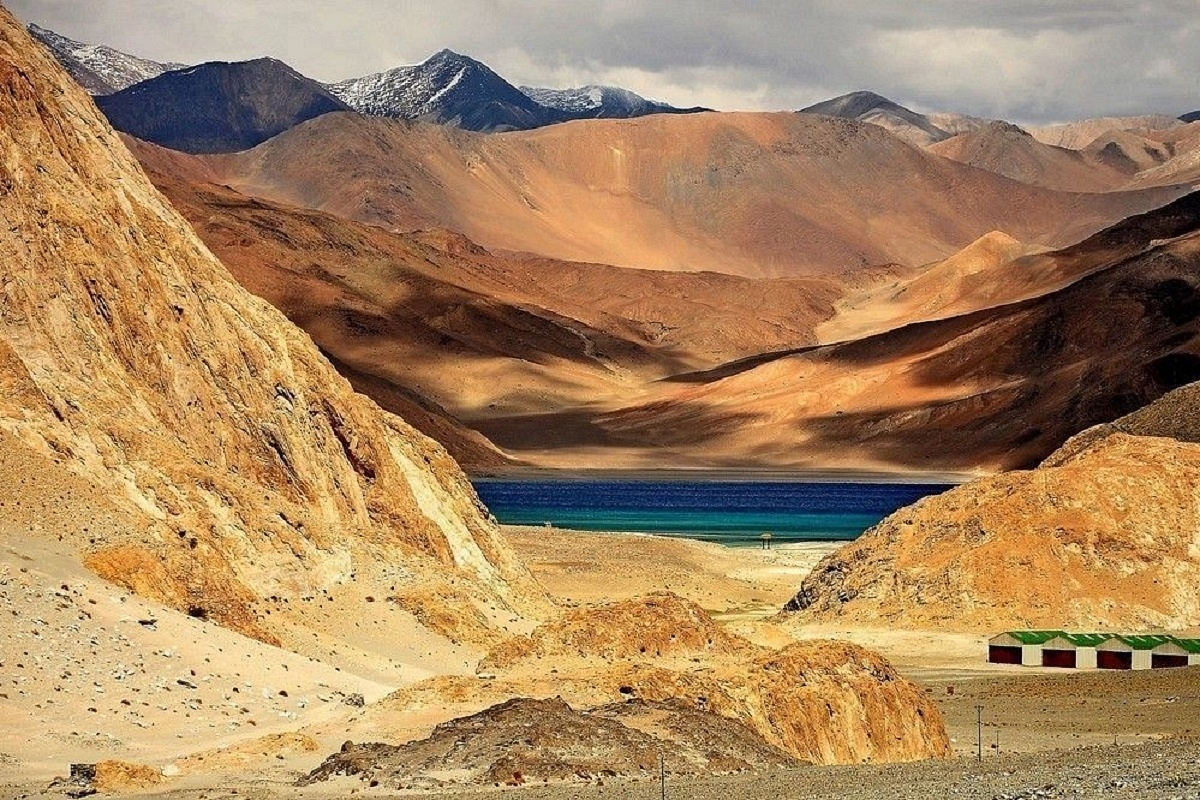Defence
Explained: Why The Crisis In Ladakh Is Far From Over
- A new crisis in eastern Ladakh or elsewhere along the LAC would undo the gains made in the form of disengagement over the last two years.

Pangong Tso.
Indian and Chinese troops began disengaging at Patrolling Point (15) in the Gogra-Hotspring region of eastern Ladakh.
With this development, announced by India on Thursday (8 September), the two sides have now disengaged at all the friction points in eastern Ladakh, where the standoff began in April-May 2020.
It comes over a year after Indian and Chinese troops disengaged at other friction points in eastern Ladakh.
These include the northern bank of Pangong Lake, where China had occupied territory between Finger 4 and Finger 8, the Galwan Valley, where Indian and Chinese troops clashed in June 2020, and the peaks of the Kailash Range, which the Indian Army took control of in August 2020, just weeks after the clashes in Galwan, to force the People's Liberation Army to come to the negotiating table.
The breakthrough, the first since the disengagement at PP-17A in August 2021, is a positive development. With the two sides withdrawing forces from all the friction points, the possibility of a miscalculation leading to clashes, or worse, a conflict, has decreased significantly.
However, the limited disengagement does not mark the end of the tensions in eastern Ladakh and elsewhere along the Line of Actual Control (LAC).
One, over the last two years, China has ramped up the development of infrastructure along the LAC.
It has built new bases in depth areas to sustain a large number of troops and equipment over the long-term. China has also upgraded its airbases by increasing the length of their runways to eliminate the disadvantages it faces due to high altitude. It has developed new infrastructure, including a bridge over Pangong Lake, to make the deployment of troops faster and easier.
All of this suggests that China is in no mood to withdraw its forces and return to its pre-2020 military posture along the LAC. It has forced India to maintain a matching troop presence on its side.
The situation has led to the increased militarisation of the LAC and could result in 'LOC-isation' becoming a strategic reality.
The LOC-isation of the LAC would not only be costly but also dangerous.
The presence of a large number of troops in close proximity, backed by heavy equipment, increases the chances of inadvertent escalation.
The need for better surveillance and high alertness levels will also add unpredictability to the situation, making it more prone to escalation.
Two, the availability of a large number of troops and equipment along the LAC, coupled with the new infrastructure that it has created, allows China to repeat, at least in theory, its actions of April-May 2020.
Given that the People's Liberation Army has chosen to activate various flashpoints along the LAC, from Arunachal to Sikkim and Ladakh, over the last few years, a repeat can't be ruled out.
It is for this reason that India has emphasised the need for de-escalation during talks with China. But with no sign of movement toward de-escalation, it seems China is inclined to retain the lever.
Three, legacy disputes in areas like the Depsang Plains in northeastern Ladakh and Demchok in the southeastern part remain unresolved.
With the PLA trying to shift the LAC westwards, these areas could turn into new flashpoints. Given that a large number of troops are now present on both sides of the LAC, the situation could turn more volatile than it has ever been in the past.
A new crisis in eastern Ladakh or elsewhere along the LAC would undo the gains made in the form of disengagement over the last two years.
Introducing ElectionsHQ + 50 Ground Reports Project
The 2024 elections might seem easy to guess, but there are some important questions that shouldn't be missed.
Do freebies still sway voters? Do people prioritise infrastructure when voting? How will Punjab vote?
The answers to these questions provide great insights into where we, as a country, are headed in the years to come.
Swarajya is starting a project with an aim to do 50 solid ground stories and a smart commentary service on WhatsApp, a one-of-a-kind. We'd love your support during this election season.
Click below to contribute.
Latest